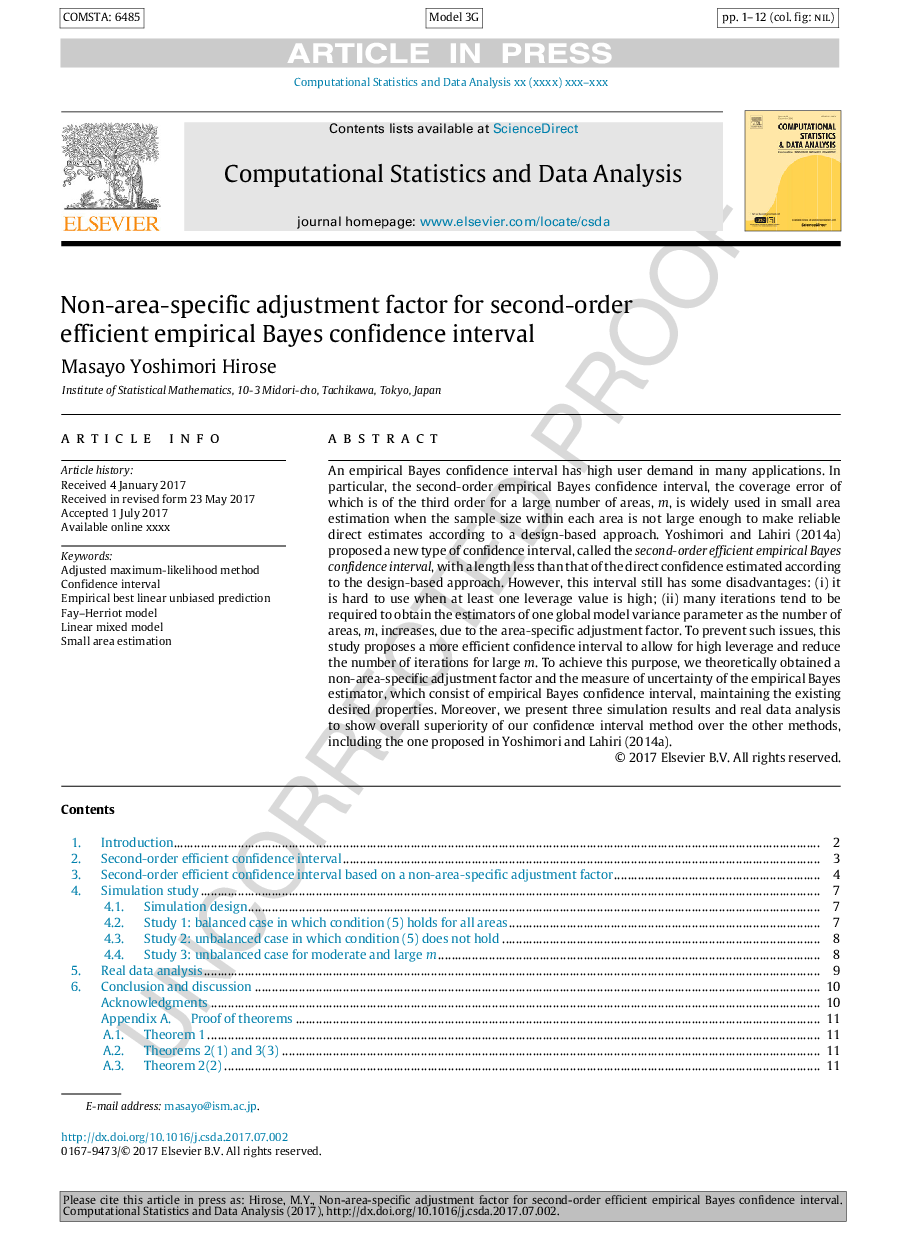| Article ID | Journal | Published Year | Pages | File Type |
|---|---|---|---|---|
| 4949200 | Computational Statistics & Data Analysis | 2017 | 12 Pages |
Abstract
An empirical Bayes confidence interval has high user demand in many applications. In particular, the second-order empirical Bayes confidence interval, the coverage error of which is of the third order for a large number of areas, m, is widely used in small area estimation when the sample size within each area is not large enough to make reliable direct estimates according to a design-based approach. Yoshimori and Lahiri (2014a) proposed a new type of confidence interval, called the second-order efficient empirical Bayes confidence interval, with a length less than that of the direct confidence estimated according to the design-based approach. However, this interval still has some disadvantages: (i) it is hard to use when at least one leverage value is high; (ii) many iterations tend to be required to obtain the estimators of one global model variance parameter as the number of areas, m, increases, due to the area-specific adjustment factor. To prevent such issues, this study proposes a more efficient confidence interval to allow for high leverage and reduce the number of iterations for large m. To achieve this purpose, we theoretically obtained a non-area-specific adjustment factor and the measure of uncertainty of the empirical Bayes estimator, which consist of empirical Bayes confidence interval, maintaining the existing desired properties. Moreover, we present three simulation results and real data analysis to show overall superiority of our confidence interval method over the other methods, including the one proposed in Yoshimori and Lahiri (2014a).
Related Topics
Physical Sciences and Engineering
Computer Science
Computational Theory and Mathematics
Authors
Masayo Yoshimori Hirose,
